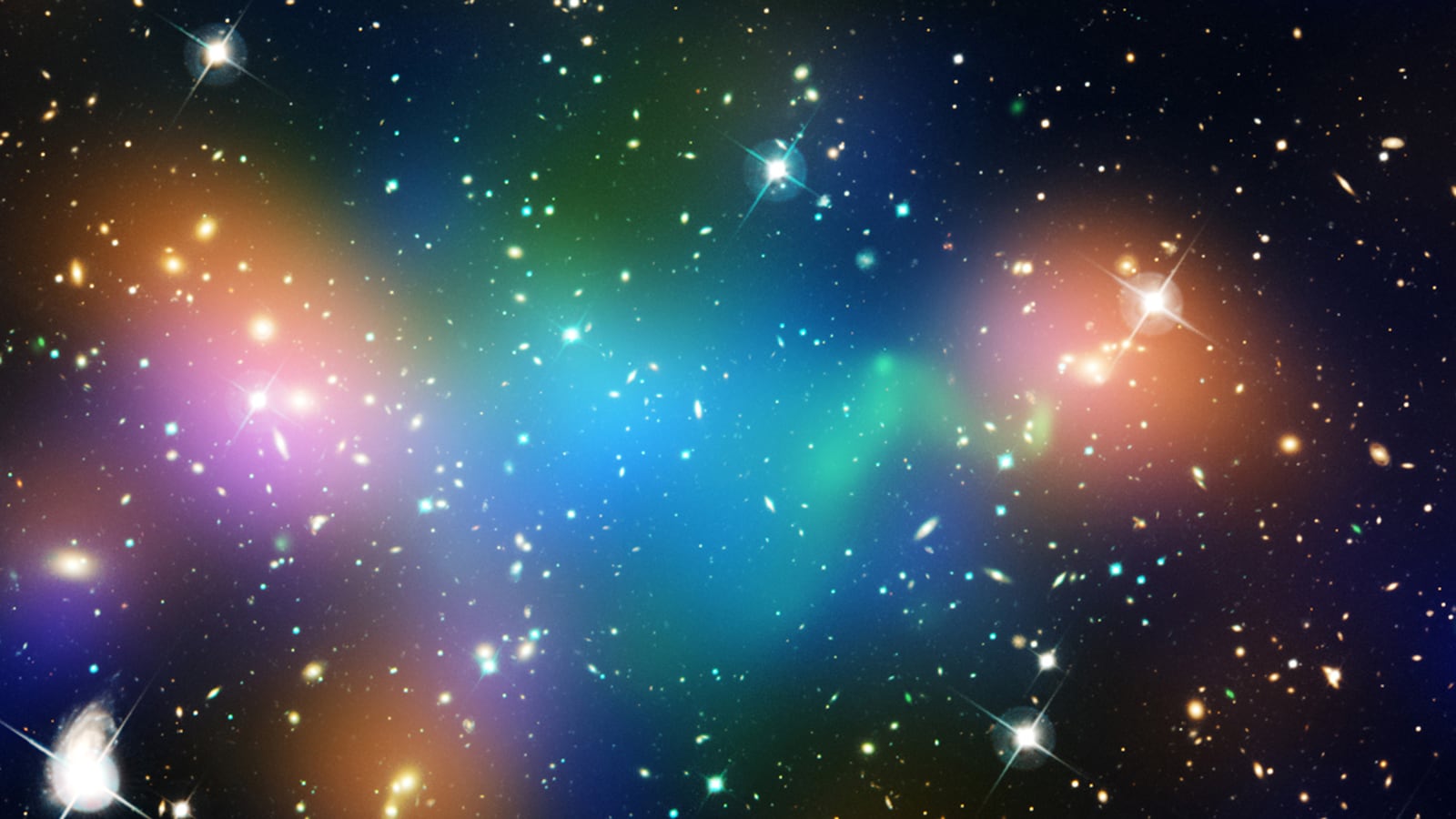The Universe is filled with the mysterious invisible substance we call dark matter. Like the Force, it binds the galaxy together (though life doesn’t create it—sorry, Obi-Wan). We don’t know exactly what it is, but researchers have some educated guesses they work from to see what sort of particle or particles dark matter might be made of.
That’s the motivation behind the Alpha Magnetic Spectrometer (AMS-02), a huge particle detector attached to the International Space Station (ISS). Rather than look for dark matter directly, an approach pursued by other experiments, AMS-02 is hunting for particles that might be produced if dark matter can collide and annihilate, the same way ordinary matter and antimatter annihilate when they meet.
The experiment, which has been collecting particles for several years, has found something interesting: an elevated number of positrons, the antimatter counterpart of electrons. However, fascinating as it is, AMS-02 isn’t seeing what we’d expect if dark matter was the culprit. While we can’t yet rule out the possibility that dark matter is responsible, what evidence there is seems just as likely to point to another source.
Nearly everything we know about dark matter so far comes from astronomy. By studying the structure of galaxies, clusters of galaxies, and ancient light from before any galaxy formed, astronomers have learned that about 85 percent of all the matter in the Universe is different from the electrons, quarks, and other particles that make up the atoms of our ordinary existence. One result of this study is the realization that dark matter particles must rarely collide with each other, since any collisions would change the structure of galaxies in noticeable ways.
But “rarely” doesn’t necessarily mean “never,” and if collisions happen, they should be more common in the central part of the Milky Way and other galaxies, where the concentration of dark matter is higher. And if collisions result in annihilation like matter-antimatter collisions do, the products could include particles we can detect: gamma rays, electrons, and positrons. (This particular hypothesis doesn’t have a separate type of “dark antimatter.” Instead, dark matter is its own antimatter, so any pair of particles that meet will destroy each other. This isn’t the only option, though that’s a story for another day.)
That brings us to the new AMS-02 results, published last week in Physical Review Letters. Since it’s a particle detector rather than a telescope, the experiment looks like something you’d see at the Large Hadron Collider: layers of material and strong magnets to separate out each type of particle entering it. As a result, AMS-02 can tell the difference between gamma rays (which aren’t affected by magnetic fields) and electrically-charged particles (which are), between electrons and positrons (which carry opposite electrical charge), and between positrons and protons (which have very different masses). Additionally, since it’s attached to the ISS, it sits above Earth’s atmosphere, which tends to block the most interesting particles for studying dark matter annihilation.
Since it began operations, AMS-02 has spotted a lot of extra positrons, compared to what would be expected from ordinary cosmic rays alone. That’s in agreement with other studies, including the Fermi gamma-ray observatory and the PAMELA experiment, though AMS-02 has been able to collect more and better data, especially for higher-energy particles. The new paper follows up an announcement last year, but is a much larger study with 41 billion particle detections, of which about 10 million are electrons and positrons.
If the extra positrons are due to annihilations near the Milky Way’s center, then their number and energy should depend on the mass of dark matter particles. That’s a consequence of E = mc2: the destruction of dark matter particles converts mass (m) into energy (E), some of which might get turned back into mass in the form of electrons and positrons. At some maximum energy, there won’t be enough available energy from annihilation to make new positrons, so experiments should see a sharp decrease in positron numbers beyond that maximum.
However, AMS-02 isn’t seeing that drop off yet. In fact, the data seem to show positron counts leveling off at high energy, but things are still pretty messy. It’s possible, as the lead researcher and Nobel Laureate Sam Ting argues, that there’s a small decrease pointing to a sharper decline. If that’s right, then the excess positrons might be from annihilation of dark matter particles with masses about 1000 times larger than a proton.
I’m personally skeptical. The uncertainty in the positron counts are huge at the high energy end of the AMS-02 results. Without clearer data, it’s hard to tell which way the numbers are going to go at still higher energies, which is where the dark matter magic would happen.
It’s also possible the signal AMS-02 sees could also be the result of neutron stars, which can create and fling positrons around the galaxy. That explanation has its problems too: positrons seem to come from all directions, whereas neutron stars would tend to concentrate them more in certain directions.
And of course, even if AMS-02 sees nothing dark matter-like after it completes all of its data collection, that tells us very little about dark matter itself. We know it exists, but we don’t know the mass of dark matter particles or if those particles annihilate. With the absence of an energy cut-off in AMS-02 data and a more mundane explanation available, we’re definitely still looking for dark matter and will be for at least a little while yet.






